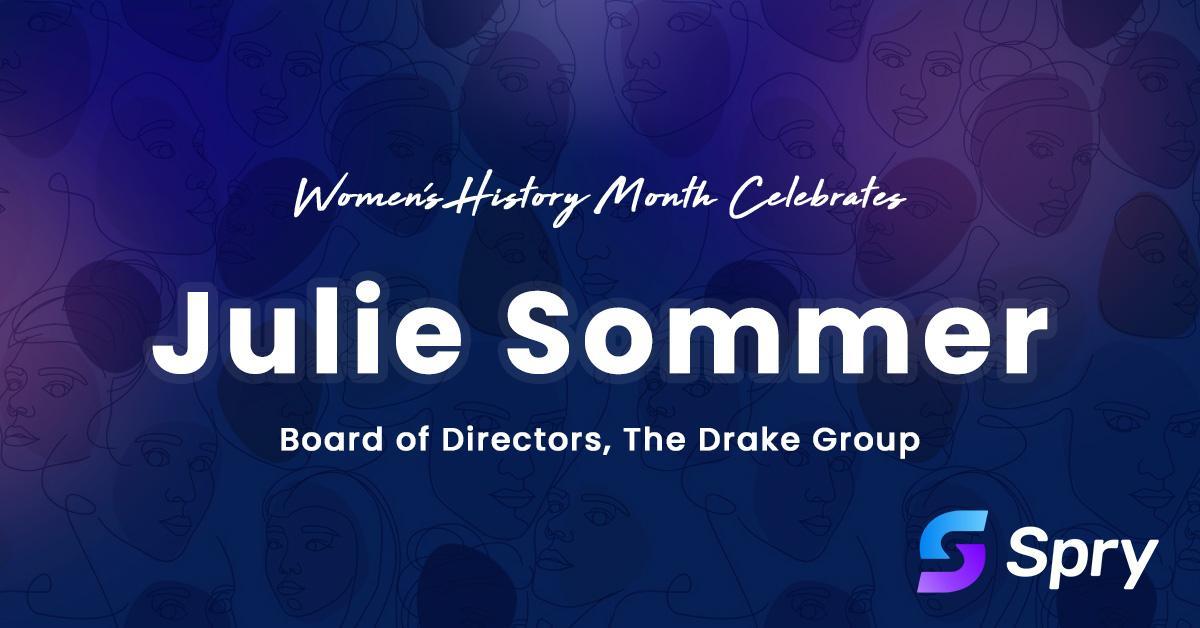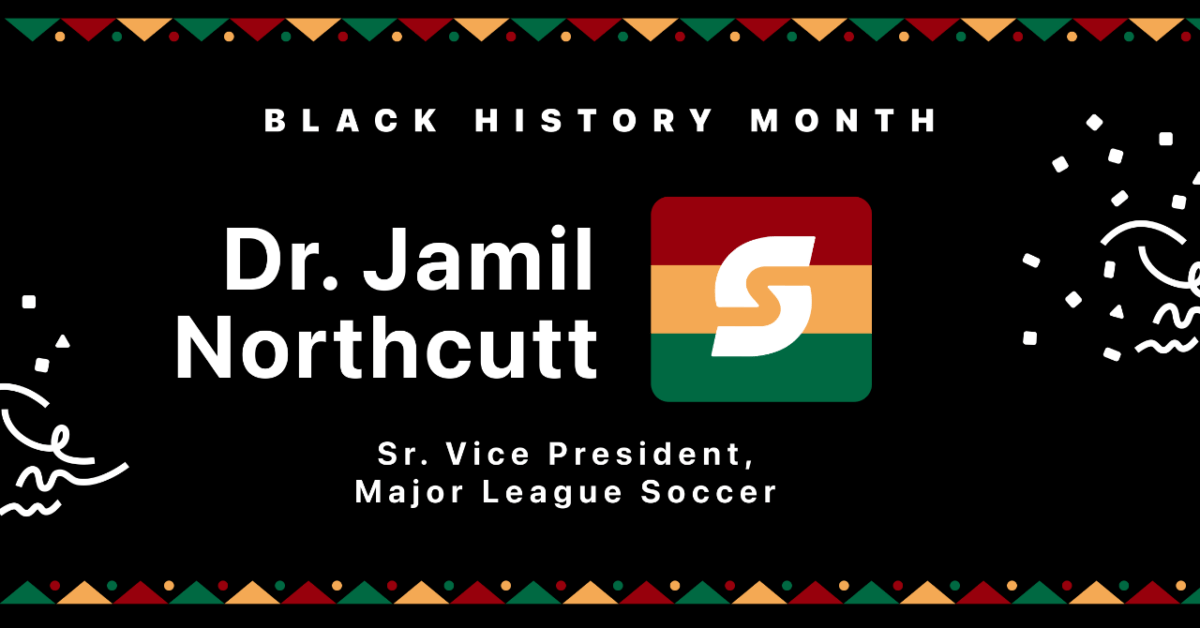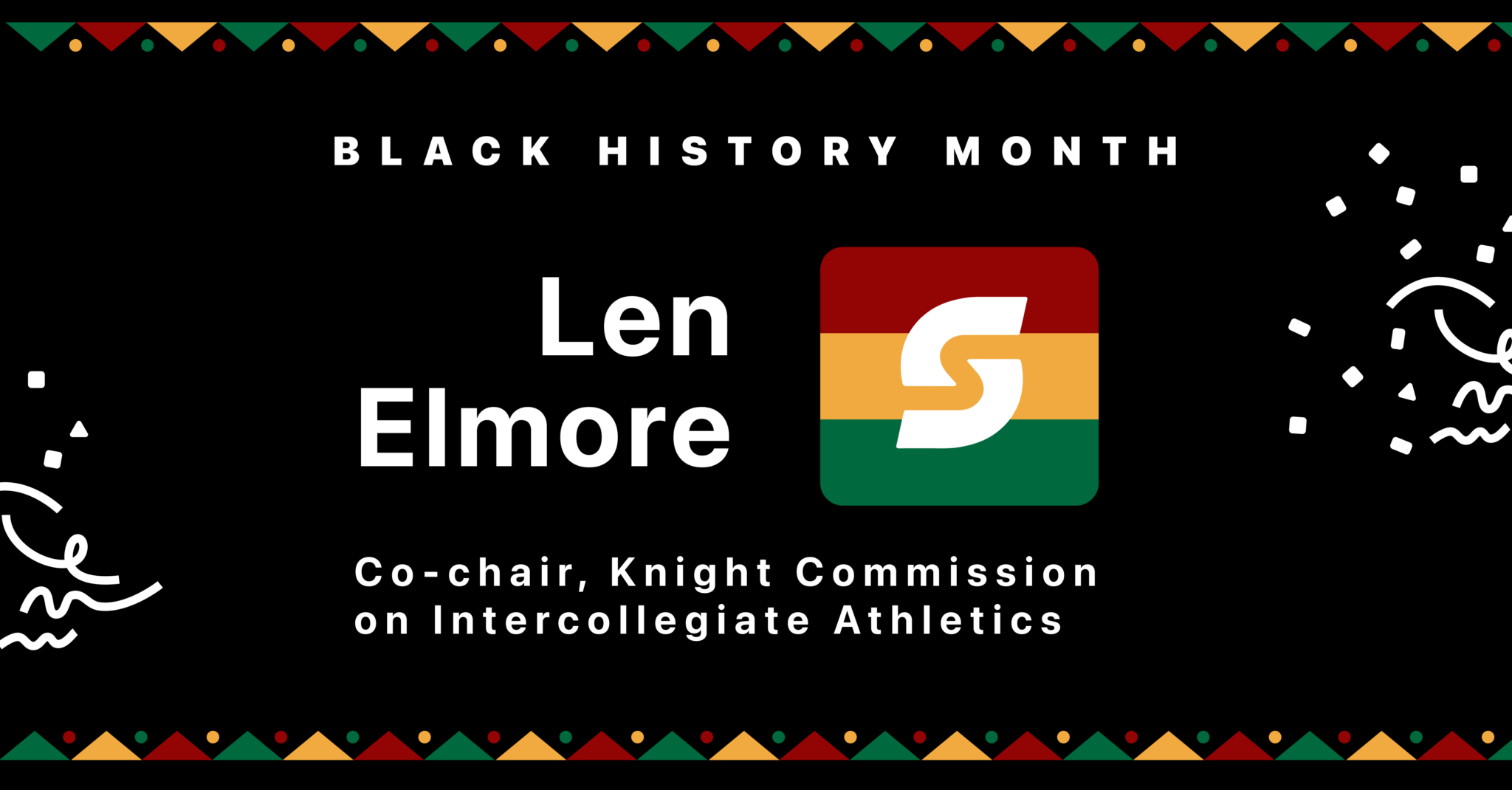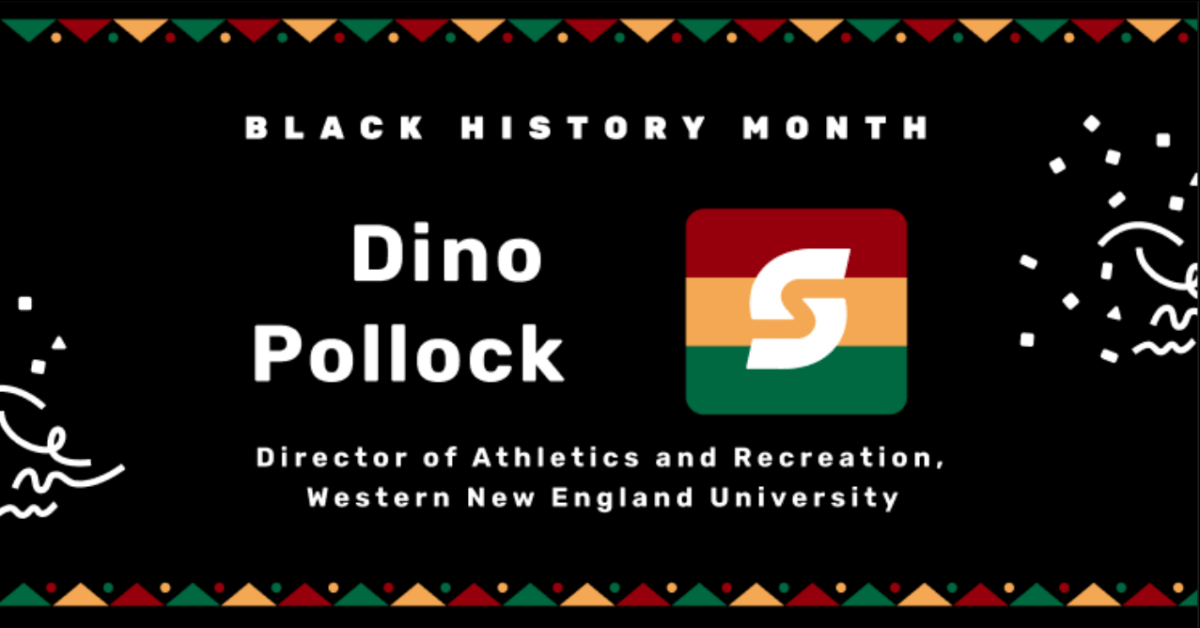Women’s History Month: Celebrating Julie Sommer
Spry is thrilled to celebrate the many successful women in the sport industry. We are proud to work with many of these women and can’t wait to share their stories and successes with you.
We recently had the opportunity to speak with Julie Sommer, an attorney in Seattle, Washington. She serves on the Board of Directors of The Drake Group, a national think tank dedicated to academic integrity and advocacy on behalf of college athletes.
Below, please read a summary of our conversation, with answers written and provided by Julie.
Please give me a brief history of your life/career
I grew up in Martins Ferry, Ohio, a small town on the Ohio River in eastern Ohio not far from Pittsburgh. I started swimming competitively at the age of seven following my two older sisters who also swam.
Sports have always been a big part of our family. My dad played football and wrestled at Bowling Green State University. My mom, who also attended Bowling Green, was also very athletic. However, she was steered toward being head majorette in the band as there weren’t many opportunities for women and she could twirl a mean baton. One sister swam at Bowling Green and the other at Wittenberg University. My uncle played football under coach Woody Hayes and was a part of an Ohio State national championship team. My cousin played football for West Virginia University and my grandmother was captain of her high school basketball team in Martins Ferry—back when girls only played half court and no college opportunities existed for female athletes. My grandfather played football for Martins Ferry High School and later crossed the river to play for the semi-pro Wheeling (WV) Stogies (named after the cigars made there).
All my life I’ve loved swimming. I enthusiastically worked my way up through age group swimming ranks. The 1984 LA Olympic Games proved to be a turning point for me: I witnessed for the first time how far women could go in the sport—all the way to the Olympic stage. One swimmer in particular, Mary T. Meagher (“Madame Butterfly”), the greatest butterflier in the world, captivated me. Butterfly was my favorite stroke and she inspired my imagination and motivated me to push and find ways to get better.
I became nationally ranked in high school, made it to the big meets like US nationals, and several colleges recruited me for visits my junior year, including the University of Texas. I immediately fell in love with UT and the people there. It’s really always about the people. While UT, its campus and facilities, were (and still are) first class, it really is all about the feeling you walk away with—and, for me, it’s the people who gave me that. The program, coaches, and swimmers impressed me greatly. They were focused, positive, supportive, and welcoming. I could see they genuinely loved going through the college and swimming experience together. I canceled my last recruiting trip as I didn’t want to waste that coach’s time and money. I knew I’d be going to UT.
Texas was, and is, a dynasty in swimming; all the women that came before me served as role models. It’s a truly remarkable group of women who make up both the past and current teams at Texas. They become like family. As a team, we experience the highest of highs and the lowest of lows together while going through incredibly rigorous daily workouts and competitions. We were bound to develop lifelong, deep bonds, and mutual respect. And, we have.
What inspired you to want to pursue a career in intercollegiate athletics?
After college and while applying to law school, I became aware that the Women’s Sports Foundation in New York offered internships where my former Athletic Director at Texas, Dr. Donna Lopiano, served as CEO. At the time, I wanted to pursue a career in higher ed athletic administration. Given all the intersections of sports with law—compliance, equity, contracts, licensing, etc.—law school would provide additional skills to reach that goal. Dr. Lopiano selected me as her Advocacy Intern at the Foundation. It was an amazing time. My work included handling all the in-coming advocacy calls, creating and writing a gender equity newsletter, and producing the first ever Gender Equity Report Card for all the colleges and universities across the country which was quite the undertaking. Dr. Lopiano and I also met with a number of Fortune 100 companies to create a major international women’s sporting event, working closely with company executives addressing sponsorship, licensing and other contractual issues. Dr. Lopiano’s mentorship and including me in these high-level experiences instilled in me a passion for working in intercollegiate and professional athletics.
I returned to Ohio to attend law school. I also worked part-time in The Ohio State University Athletic Compliance Office where I became intimately familiar with the NCAA rule book. At times, the rule book seemed bigger and more complex than the U.S. Tax Code. While rules and regulations are necessary—then and now—the NCAA rule book is overly complex and some rules have been implemented in ways that aren’t effective, have had unintended consequences, and may be not beneficial or fair to college athletes.
I also worked at International Management Group (IMG) headquarters in Cleveland, Ohio in their legal department. I had the opportunity to meet and work for some very smart, remarkable people in professional sports including IMG founder Mark McCormack, Cher Tate in legal, and Stephanie Tolleson in the global tennis division.
Who were your role models growing up?
In sports?
When I was really young, my sports role model was iconic Pittsburgh Steelers wide receiver Lynn Swann. But despite wearing his 88 jersey and playing many pick-up games with the neighborhood boys, I sadly realized at some point there was a fundamental reason I wasn’t going to have a football career beyond the backyard. For the record, I was always picked early in those mad, scrappy pick-up games.
In business?
Women’s sports are unique because they’re more than sport; they’ve been, and continue to be, a movement. Girls and women today have the opportunity to pursue their athletic dreams because of those who paved the way for them—athletes, coaches, and administrators. Recognizing and honoring the women who led the way and inspired so many young women, including young me, by literally creating the pathways for women to find success in their sport and in life cannot be underestimated.
For me, Dr. Lopiano served as an influential role model. In 1975, she became the first Director of Intercollegiate Athletics for Women at the University of Texas. I was fortunate to arrive in Austin near the end of her tenure. I witnessed her work, her presence, and all she built at Texas. She was, and is, truly a force of nature. I and so many others have Dr. Lopiano in particular, along with a small group of women who also served on the national scene, to thank for the opportunities we were afforded. These pioneers in women’s athletics took risks, worked extremely hard, pushed the heavily male-dominated system, and led the way for girls and women at such a critical juncture—before Title IX was passed and in the subsequent decades.
During her tenure, Dr. Lopiano grew the Women’s Sports Foundation tenfold, giving away many millions of dollars to girls and women through training grants to enable them to pursue their athletic and educational dreams. We provided hours upon hours of advocacy work at both state and federal levels helping young female athletes and their families. The Foundation hosted large annual events like the annual dinner in NYC, recognizing great female athletes, as well as supporting National Girls and Women in Sports Day in Washington, DC.
Having been one of her athletes at Texas and seeing her incredible efforts at the Women’s Sports Foundation first hand, I believe her legacy and work empowers young women, like me, to do what they want to do and be who they want to be. It’s equally important to recognize her work on the national scene while she served as AD, pioneering the advancement of women’s athletics. The NCAA overtook the AIAW in 1982 in what was basically a hostile takeover. The AIAW, at first ignored by men’s sports, had become too good!
She imbues her work with a vision fed by her remarkable drive, positivity, and intelligence. She sees around corners most experienced lawyers don’t. Her ability to develop and maintain strong alliances remains a hallmark of her professionalism. Of all her great leadership qualities, I most admire her vision and ability to build alliances. She’s not satisfied with anything but full equity for women at the collegiate level because she knows how important and how sacred these opportunities are for women. With the 50th anniversary of Title IX, Women’s History Month, and other commemorations, many focus on celebrating how far women have come in sports. We have come a long way in 50 years—and it’s important to take honest stock of where we are and recognize there’s still far to go.
We should ask: What do we want to celebrate? Given that we’re still far from achieving equity, what do we need to do to create a level playing field? It is no hyperbole to say the future growth of sport is in women’s sports, as all the signs and current evidence point to this fact. The latest numbers of collegiate Name, Image, Likeness (“NIL”) revenue show the second highest sport behind football is women’s basketball, ahead of men’s basketball. Now is the time to recognize the proven market and value of women’s sports and to provide the space for innovation and growth for both women and men.
And we should also ask: Given that we’re still far from achieving equity, what do we need to do to create a level playing field? The 2021 Kaplan Report reflects the NCAA stymied the growth of women’s basketball and women’s sports. This is something hard to reconcile with marking the 50th anniversary of Title IX. We must acknowledge this and move in the right direction. Women have been undervalued for too long and it holds all of us back, not just the women players. Just this year the term “March Madness” finally includes women—no longer is there a “women’s tournament.” The Kaplan Report also reflects further work is necessary to achieve equity.
Because of the work of Dr. Lopiano and others, I remain optimistic. Her vision has proved to be right—a kind of “build it by providing the opportunities, and they will come.” The opportunities didn’t magically appear in 1972 when Title IX passed; it took hard work, dedication, and holding people and organizations accountable to make sure its implementation makes a difference. The field of dreams for girls’ and women’s sports, including women’s professional leagues, are now taking off with proven markets for them—if they are allowed to succeed and thrive. Over 75% of our summer Olympic team comes through the college ranks, yet we’re still far short of equity, and backsliding in opportunities in those critical areas of high school and college where young athletes need the coaching, training, and support to excel. All of this serves as a reminder of why we cannot rest upon the gains of the past, and the leadership of women like Dr. Lopiano. The fight for equity and parity continues in all of our work.
If you could share one bit of advice with tomorrow’s future leaders, what would it be?
I think many in our industry who have a great passion for this work are former athletes themselves. There’s a lot we go through as college athletes. You have to be a very committed person to simultaneously do both school and compete at high levels in your sport. It’s also very difficult when you suddenly stop that demanding athletic career and transition from elite sports to professional life. It’s a really tough transition for many; it’s a shock to the system mentally, physically and emotionally. Suddenly there’s no strict regimen, and your community seems gone. I remember former Texas swimmer and coach, four-time Olympian, and all-around fantastic person, Jill Sterkel, once saying, “Think about how unique that is—to retire from an intense career at around the age of 22. How many people do that in life?” It defines your life—and often your self-esteem—up to that point, and then it’s time to reevaluate and recalibrate to an uncertain future.
It’s important to recognize what you learn about yourself during your time competing. Every athlete gains a much deeper sense of self by just participating. Swimmers learn a lot pushing our bodies to extreme limits while staring at a black line, often in a meditative state, many hours a day. Sports provide athletes with transferable skills and life lessons to carry with them even after they no longer compete.
It’s equally important for athletes to remember and identify those skills and lessons early on in our post-athletic careers and lives outside of sports. Don’t ever lose sight of what you gained in that experience. It took me a while to realize this—that the mental muscle memory I developed in swimming was carrying me through many times in my career and life after swimming. It doesn’t matter how far or successful one was in their sport. Those lessons and skills stay with you. And they are invaluable. I would encourage others to really reflect upon, explore, and identify early on all they learned from their time as athletes—not to mention the passion you have and finding that in your work.
The best piece of advice you’ve ever received was
That’s a great question. I received so many great pieces of advice along the way from coaches, teammates, mentors, and many others. I think the most recent advice I followed was from a great friend, which confirmed what I think I already knew. I made the decision to leave the law firm where I worked for almost nine years and start my own practice to give me the freedom to pursue the work I’m passionate about and pursuing today. I’m working in the industry that inspired me to pursue law in the first place, and trying to make a meaningful contribution at a critical time in college sports. I find that kind of work deeply satisfying. Having the courage to take big risks is important—something I learned from sports. Participating in athletics is a place where one exercises that “risk muscle” every day an athlete shows up, and they carry that muscle memory with them throughout their life.
That move finally gave me the bandwidth to follow my passion, do this work, and it’s been really fun and exciting. I’ve already met so many new people even while we’ve been limited during the pandemic. It’s amazing to think of the new relationships I’ve formed without having met any of them in person. And it’s a great time to be involved with all the fast-moving, emerging issues across sports.
Finish the sentence, the best part of my job is _________ .
The best part of my job is having the ability to directly impact policy and the future of college sports while working with great minds and people. Reuniting with Donna Lopiano at The Drake Group, I get to work with a team of professionals who care deeply about the issues, college athletes, the future of American collegiate athletics, and by extension, all of sport in our country. As a former collegiate and national team swimmer, it’s important to recognize not just the complexities and critical moment of change we’re experiencing in college sports, but also recognize how all the moving pieces at the professional, Olympic and national team, collegiate, and high school levels are so closely related. It’s important to get the policy right moving forward and I’m really excited for the potential and possibilities before us in college sports and beyond.
Read the next article in Spry’s Women’s History Month series: Celebrating Kanoe Bandy, Athletic Director at Taft College and CCCAA Board Member.





